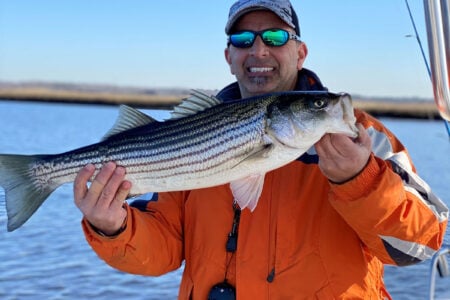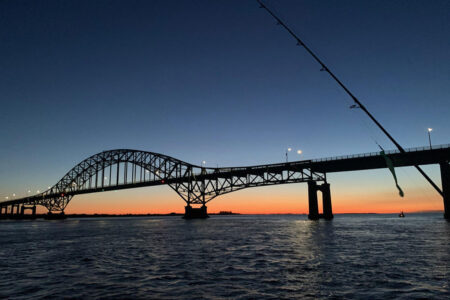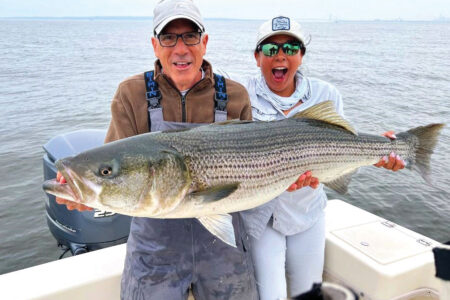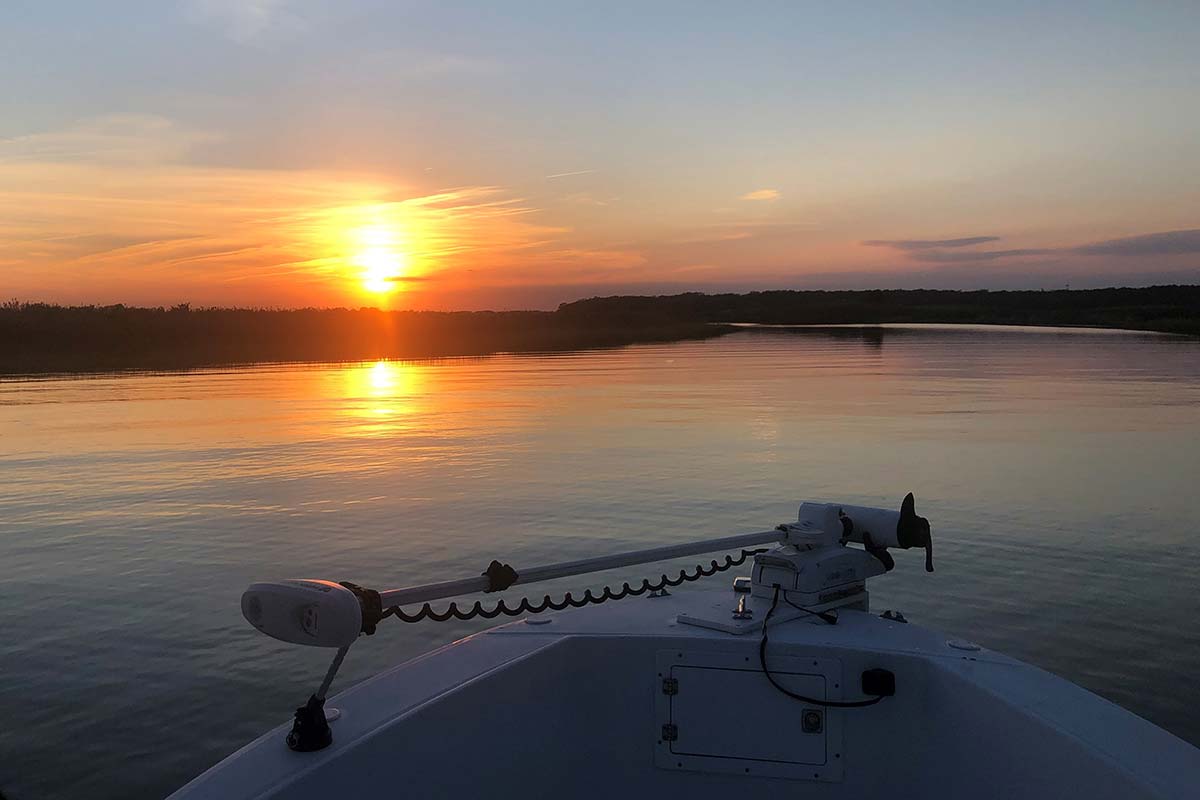
It’s back to the marshes this month, before the front beaches turn hot and heavy.
We can expect a buffalo stampede sometime this month as the first wave of jumbo striped bass barrels in from the east. The first explosion of 2022 came on October 8 when winds laid down from the west after a pattern of heavy nor’easterlies. Adult menhaden nosed up into the wind and onto the Central Jersey beaches with jumbo bass hot on their tales; for all intents and purposes, it was pure bedlam.
I remember the day pretty vividly, only because I wasn’t there; I was in my truck at 6 a.m. heading up to the Pocono’s to a buddy’s lake house when the texts began whistling away on my cellphone. “Do you want to turn back,” my wife asked (god, what a lucky guy I am). Suffice to say, I ended up with a mess of perch and a chunky 3-pound Pocono largemouth concluded with a night of guitar pickin’ around the fire.
By Monday morning, finally back on the Ocean County beaches, the buffalo were mostly “roaming” with the second battalion of migrating stripers still weeks out. But with a pattern of westerly winds entering the forecast, I was just as happy to get back to my boat and those glorious sedges and sod banks behind the barrier islands.
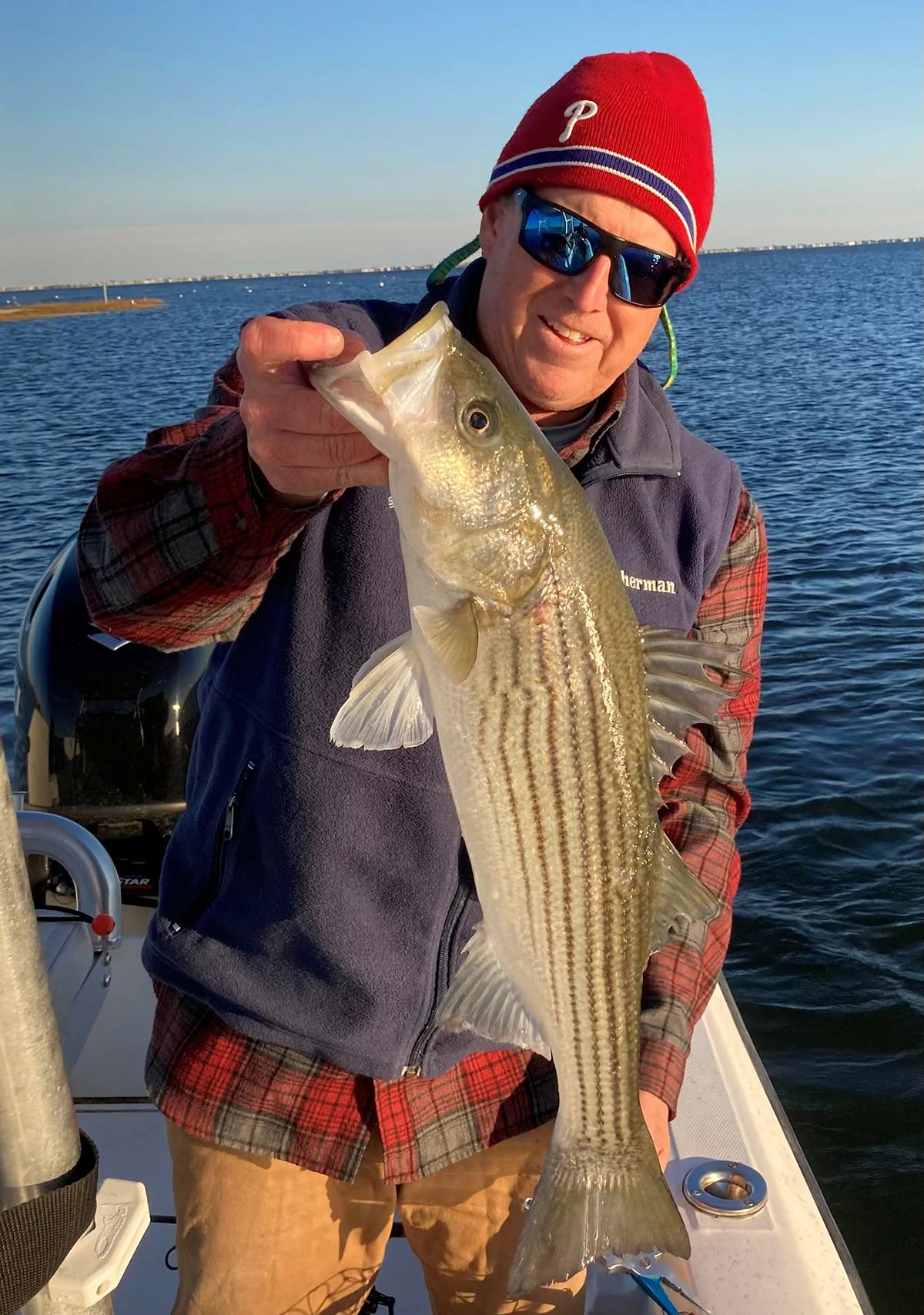
Times & Tides
As we enter the month of October, the first waves of finger mullet should be found vee-waking their way out our local inlets and down along the beaches, while thick schools of young-of-the-year peanut bunker flow from creeks and canals. As much as I hope to be there on the beach when the first bull rush of giant stripers arrive, October is the month that I get the most out of my little bay boat prior to the November blitzes in the surf, especially when the start of the ebb tide coincides with times of dawn and dusk. From my personal perspective, when the flooded marshes begin emptying out on the tidal change, it’s an ideal feeding scenario for stripers to find peanut bunker, silversides and finger mullet tumbling from the creeks.
On the higher side of the outgoing tide, in addition to bait movement you also have additional water for pushing your center console or skiff up tighter into the shallows. The addition of a Minn Kota Terrova to my 204 Angler a few years back has opened up a world of opportunities in that environment, especially when fishing solo. Just as important was getting rid of my noisy old two-stroke in exchange for repowering with the Suzuki DF140. A whisper quiet and dependable addition to the transom, I can now motor more stealthily, closer to a creek mouth or sod bank before deploying the Minn Kota to take me in the rest of the way in.
Quiet is certainly the name of the game to finding success along the shallow backwaters where I’ve found good action in areas of Great Bay and Tuckerton Bay, before moving my boat up to the upper stretches of Barnegat Bay at the beginning of this year. But that game is still the same wherever you may be hunting these outback stripers, from the Navesink down to Grassy Sound Channel; and quiet means soft stepping on the console floor, no loud music, and speaking in muted voices. That of course becomes harder when a beefy backwater striper explodes on your popper (yeah, I’m a screamer).
Looking ahead, I’ve already circled a few key times and tides in the days ahead. Recognizing some of my favorite stretches are anywhere from 1-1/2 to 2 hours after the high tide listed under the Sandy Hook column in our monthly Tide Tables in this edition of The Fisherman, the October 5-9 and October 21-25 look like prime times to hit the sedges into sunset and beginning pre-dawn. A slight offshore wind (or no wind at all) makes it even better in terms of truly appreciating the quiet and stillness out back, interrupted periodically from surface explosions.
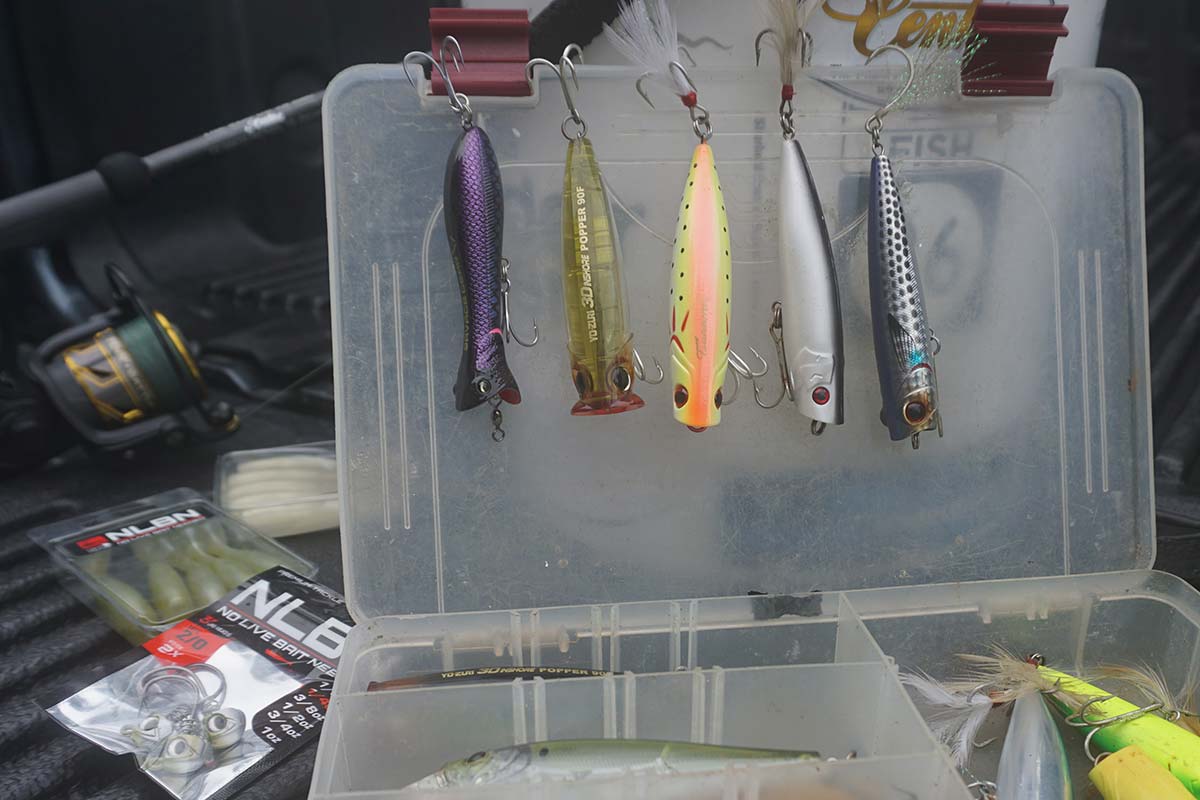
The Outack Arsenal
While more than a few “overs” (stripers over 31 inches) can be found prowling waters behind the barrier island, most of the estuary stripers are “unders” (less than 28 inches) or the “tweener” slot fish, which means scaling back. This year’s primary weapon for my sod bank striper hunts is The Weapon Jr. Mag by Century taping out at 7 feet, 3 inches with fast action and rated for quarter- to 2-ounce lures. A 3000-series reel is ideal, although I’ve got a PENN Battle III 4000 attached with 20-pound braid to 20-pound fluoro to a duolock or Tactical Angler clip.
Years ago my go to back bay popper was the Stillwater Smack It, Jr., a 3-3/4-inch, 3/4-ounce Pennsylvania-made floating popper with rattles inside (favorite colors being white, yellow, chartreuse and Smokey Joe). The company doesn’t produce as many of these plugs anymore, so I’ll grab them off the rack whenever I can find one. However, there are plenty of other selections on the market that fit the bill, including Cape May’s Intent Tackle and their Bay Series Popper, the new Tsunami Tidal Prop IPOP, and Yo-Zuri’s incredible 3D series which casts a mile and is just as effective on a slow retrieve with the occasional twitch and pop. Also added to the box this fall is the Savage Gear 3-1/2-inch Panic Popper V2.
In many instances, I’ll beef up the split rings and trebles; you’ll know which plugs require it after only a couple of fish. I also tamp down the barbs on the trebles to aid in safer release, though Intent Tackle’s Bay Series comes with VMC inline singles right out of the box. A soft bag with fluorocarbon leader, a package of Tactical Anglers 50-pound clips, and a Plano tray filled with an assortment of poppers is about all that you need. I would advise however taking a few smaller glide baits, and a few of your favorite soft and hard plastic baits with appropriate jigheads as well (I always have a few NLBN or Kettle Creek Swing Shads with me as well).
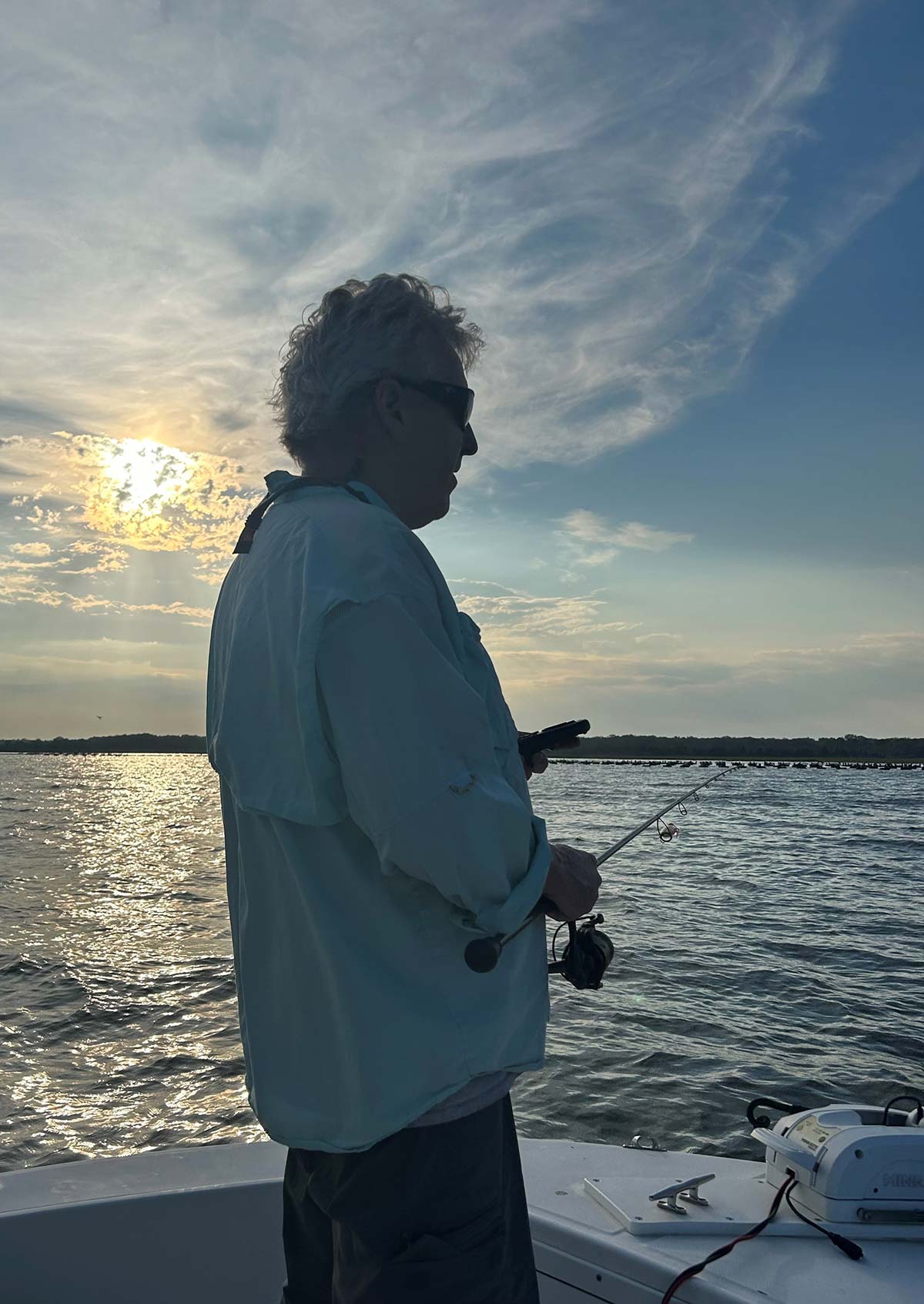
Slow & Steady
Finding a productive stretch can come from friends or simply a little prospecting; for the latter, the Navionics phone app or updated charts on your plotter is a great way to start. The ideal is a creek coming out of the marshes in quiet waters where bait is tumbling out on the dropping tide. Obviously, the closer this area is to an inlet is best, but quiet waters less traveled get the nod. The deeper the creek the better, but I have watched bass pounding on baits in just a foot of water, their dorsal fins clearly out of the water.
With the Minn Kota fired up, I’ll “spot lock” myself at casting distance of the creek mouth, laying the popper as close to either edge as possible. Many times a miscast that comes up short or too far from the bank can spook the fish; keep in mind that smaller baits will try to use the sod banks for protection as stripers hang outside a bit and make charges towards the land for ambush. I believe that’s where these stripers are looking to strike, and that’s where I want my cast.
In many instances I’m not “popping” my way back to the boat, but doing a combination of popping, light twitching and slow reeling. Most of the aforementioned poppers are just as enticing on a simple slow retrieve, pushing water while being reeled in, with an occasional pop helping draw attention. Just as exciting as the hookup is a tail-swipe, a couple of takes, and a follow. With winds laid down and glassy conditions, seeing the fish streak towards your lure and boil behind it can often be as memorable as the bent rod.
I’ll use the 5-foot “shift” feature of the Minn Kota to work both sides of a creek mouth or point, until putting the motor on to slowly work my way down the sod bank, casting the entire time. If you do find where the fish are feeding, one hooked and fought fish could spook the rest, in which case I’ll move away to another nearby location before coming back to give that previous spot another shot. Especially fun is firing a plug straight down one of the dug-out, narrow mosquito ditches off a creek; you’d be surprised how many fish are lurking up there in that super shallow water.
Don’t think of course this is all tide and time dependent; any time you’re able to fish is really the best time to fish. That said, I do prefer dusk this time of year, and even in low water you can find a score somewhere. But check the wind, and if she’s laying down there’s no better place to be than out back on the sod.

